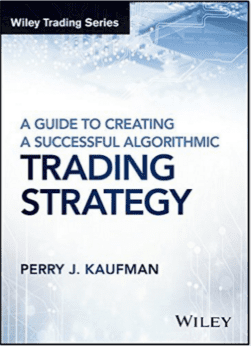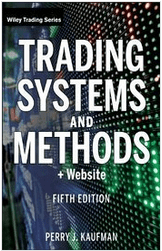
I’m sure we all want to create trading strategies that perform better and last for longer but there are a number of issues we need to look out for when developing robust trading strategies, some are well-known and some perhaps aren’t.
In this episode we’ll be talking with Perry Kaufman about strategy development and more specifically some of the issues that can catch us out when creating trading strategies. Perry raises some interesting points about optimization that may not be well known plus he shares loads of tips to creating more robust strategies.
Perry writes extensively on markets and strategies, having published fourteen books and has just released a new book on building algorithmic trading strategies, which we’ll be discussing in this episode.
He has worked and consulted to a number of successful CTA, investment and prop trading groups, creating systematic trading and hedging programs.
This is also his 2nd appearance on the podcast, appearing as a guest way back in Episode 10.
Sponsor

Topics discussed
- The most robust type of systems
- How your choice of optimization values could be misrepresenting your results and how to choose parameters that give a more accurate picture
- The mistakes traders make when analyzing optimization runs and tips to doing it properly
- How to really determine if a new trading rule is robust
- Reducing risk by using multiple parameters
- What the number of profitable runs in an optimization can tell you about the robustness of a strategy
- Why diversifying across strategies instead of across markets could be a better approach
- The challenges of building robust strategies using Genetic Algorithms and Neural Networks
Resources mentioned in this episode
- To learn more about Perry and his work, checkout his website Kaufmansignals.com or Perrykaufman.com
- He can also be contacted on [email protected]
- Books mentioned in the show:
Quotes
Top tips
Perry shared a number of great tips, here are some of my favorites:
- Use average of results in an optimization run
- Remove strategy rules that don’t add much value
- Look at the % of profitable runs in a distribution, Perry personally likes to see 66% or higher runs to be profitable
- When considering the values in an optimization range, look for the values to be evenly spaced %-wise, for example, 10/20/40/80, not linear like 10/20/30/40/50 because linear can make the larger values look more stable purely because they’re closer together as a %
- When adjusting strategy rules, don’t be fooled by a few results going up, you want something that is generalized and improves most cases
- Neural networks/genetic algorithms – feed in fewer items to get a more robust answer
Got A Question, Topic or Guest you want to see on the Podcast?
Do you have a specific question, topic or guest you’d like to see on a future podcast episode?
Click here and submit your suggestion for a chance to have it featured on an upcoming podcast episode.
Get the Transcript
Subscribe to Better System Trader and never miss another episode!
Please support the podcast by giving an honest Rating/Review for the show on iTunes!







